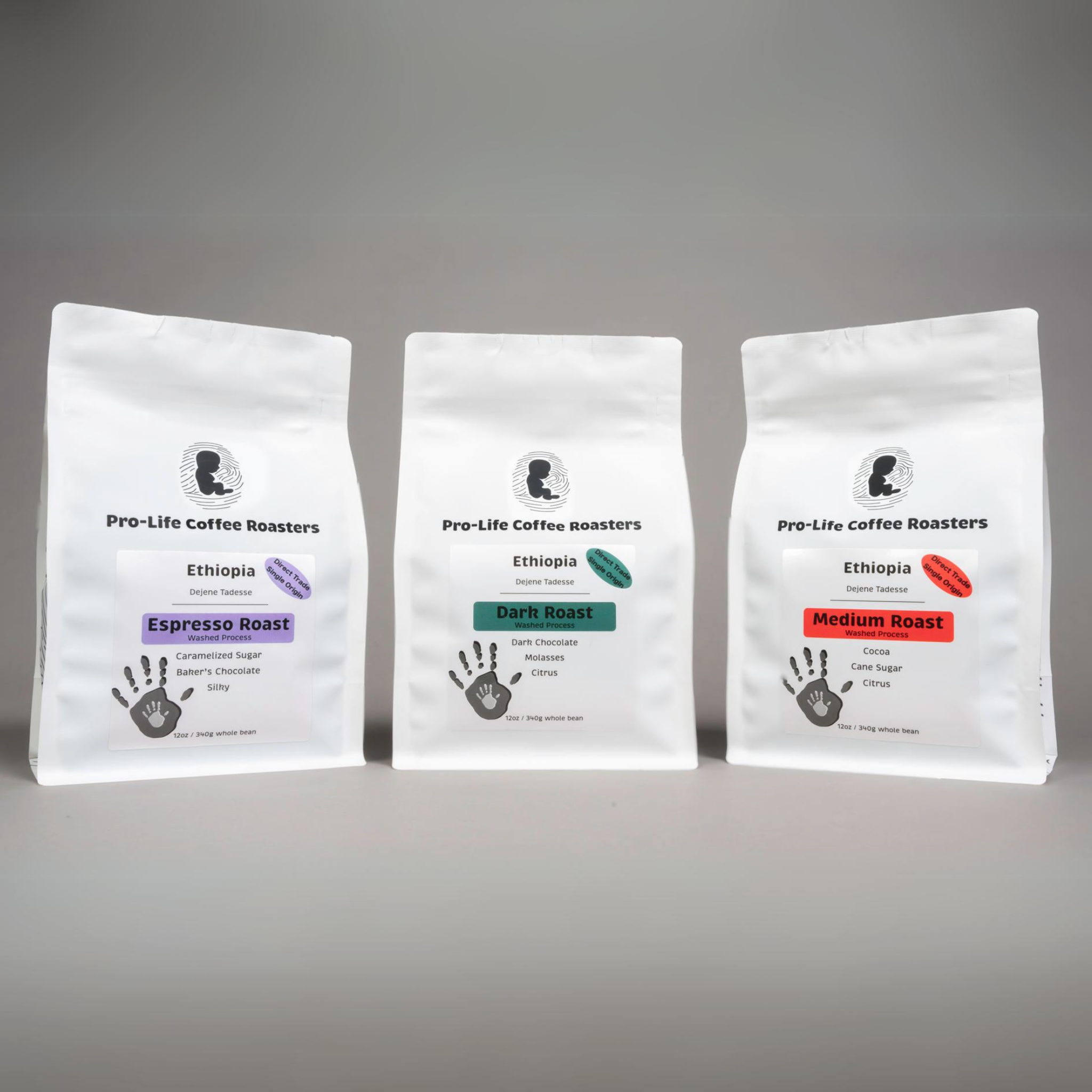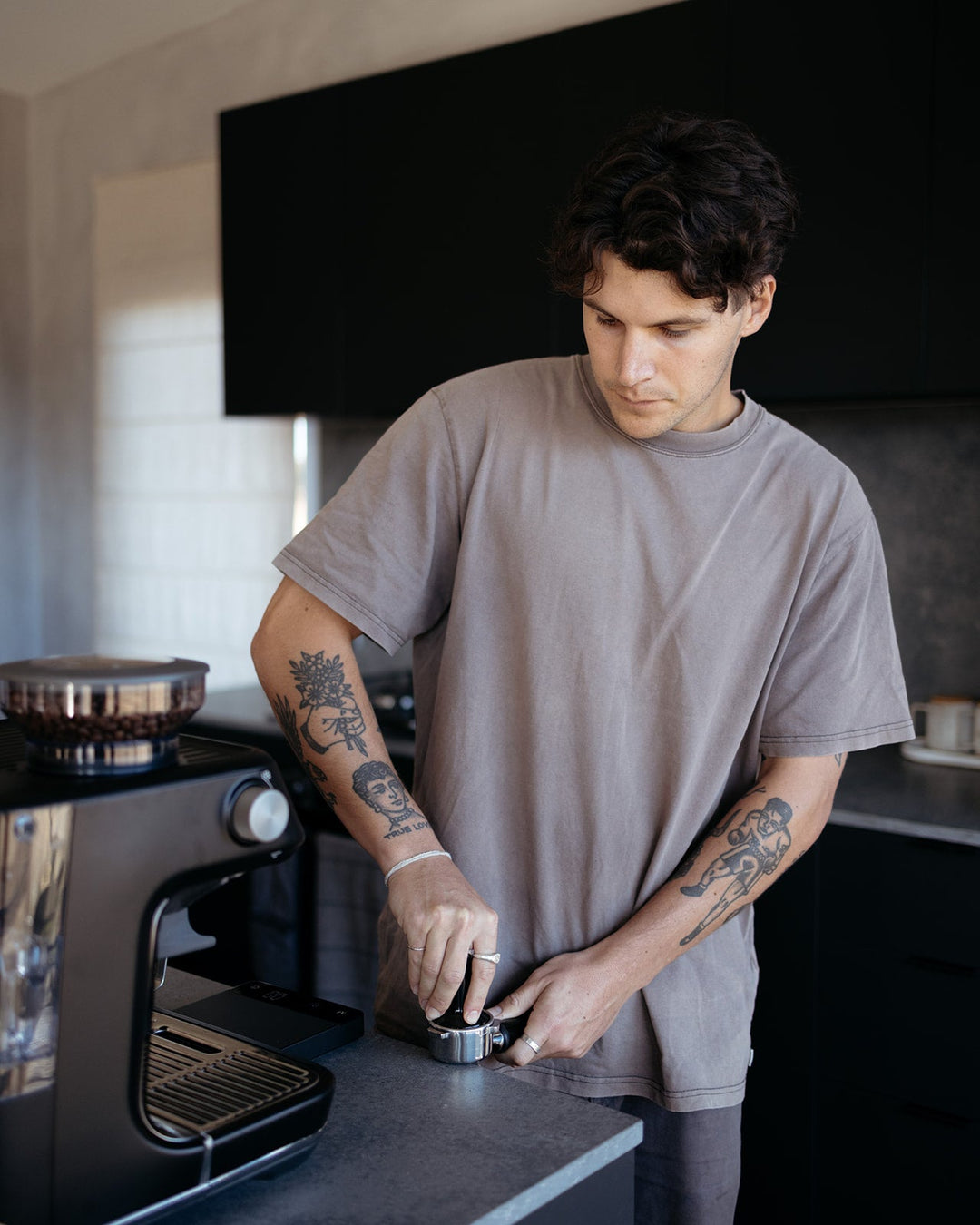Recognizing Coffee Beans: the Journey From Espresso to Blended Coffee Beans

The Beginnings of Coffee: A Worldwide Viewpoint
While you may assume of coffee as a contemporary staple, its beginnings trace back centuries, intertwining with cultures around the world. The tale begins in Ethiopia, where tale claims a goat herder called Kaldi discovered the invigorating effects of coffee beans after observing his goats frolicking energetically after consuming them. This sparked passion, resulting in coffee's infect Arab investors who treasured the made beverage. By the 15th century, it reached Persia, Egypt, and Turkey, where coffee shops ended up being social hubs for discussion and society.
As trade paths broadened, coffee made its means to Europe in the 17th century, quickly getting appeal. Each society included its unique twist to coffee preparation, improving its history.
Cultivation and Harvesting of Espresso Beans
As coffee's journey evolved, the emphasis changed to the farming and harvesting of details bean selections, specifically those made use of for coffee. You'll discover that espresso beans typically come from Arabica or Robusta plants, each offering distinct flavors. The excellent expanding problems consist of high elevations and abundant, well-drained dirt, which improve the beans' high quality.
Throughout the harvest, picking approaches differ. Timing is important; you desire to harvest when the cherries reach peak ripeness for maximum taste.
As soon as gathered, the beans are gotten ready for handling, which is important in establishing their final taste. Comprehending the cultivation and gathering processes offers you understanding right into what goes into your favorite coffee, improving your gratitude for each and every cup.
Handling Techniques: From Cherry to Bean
Since you have actually learned concerning gathering espresso beans, allow's explore how those cherries transform right into the coffee beans you like. You'll see just how different harvesting strategies effect taste, complied with by the vital steps of fermentation and drying out. Lastly, we'll break down the milling and grading process that establishes your coffee's high quality.
Collecting Techniques Explained
When it comes to coffee, recognizing harvesting techniques is important, because they directly affect the flavor and high quality of the beans you take pleasure in. Discerning choosing entails hand-picking just ripe cherries, ensuring you obtain the ideal top quality beans. Inevitably, the option of gathering technique can greatly affect your coffee experience, so it's worth recognizing exactly how those beans made it to your cup.
Fermentation and Drying
After collecting, the following actions in processing coffee beans play a considerable role in shaping their taste. You'll discover that fermentation is crucial, as it helps damage down the mucilage bordering the beans, boosting their preference profile. Relying on the technique, this process can last from a couple of hours to several days, with differing results based on temperature level and humidity.
As soon as fermentation is total, drying adheres to, which is similarly important. You can pick from sun-drying or mechanical drying approaches. Sun-drying allows the beans to soak up flavors from the setting, while mechanical drying guarantees regular moisture degrees no matter weather condition. Correct drying is necessary to protect against mold and maintain the beans' high quality, ultimately affecting your mug of coffee.
Milling and Grading Process
As fermentation and drying set the phase for taste advancement, the milling and grading procedure guarantees that just the most effective coffee beans make it to your cup. This phase involves removing the external layers of the coffee cherry, consisting of the parchment and husk. After milling, the beans are arranged by size and weight, making sure a consistent quality. You'll find that grading assists recognize defects and categorize beans, which impacts taste and fragrance. Top quality beans get a greater quality, causing a richer coffee experience. Once graded, the beans await product packaging and shipping, preserving their distinct attributes. This thorough procedure is important for providing the phenomenal preference you appreciate in every sip of your favored brew.
Toasting Methods: Opening Flavor Potential
When you roast coffee beans, the method you choose can drastically affect the flavor profile. Understanding the partnership in between time, temperature level, and roasting techniques is key to disclosing the possibility of your mixture. Let's explore just how these components collaborated to produce the ideal cup.
Toasting Approaches Described
While you may think that all coffee roasting methods yield the very same outcomes, the reality is that each method reveals one-of-a-kind taste capacities in the beans. You can choose in between techniques like drum roasting, air roasting, and even traditional frying pan roasting. Drum roasting utilizes a rotating drum to uniformly distribute warmth, improving caramelization and producing a well balanced flavor. Air roasting, on the various other hand, distributes hot air around the beans, advertising a lighter roast with pronounced level of acidity. Pan roasting permits hands-on control however calls for continuous attention to stay clear of burning. Each method has its subtleties, so explore various methods can help you find the perfect roast that lines up with your taste preferences. Appreciate the journey of locating your optimal cup!

Influence On Taste Profile
Different toasting approaches not only influence the procedure yet also considerably influence the flavor profile of the coffee beans. When you pick a light roast, you'll experience bright acidity and flower notes, showcasing the bean's beginning. On the other hand, a medium roast balances acidity with sweet taste, often exposing chocolatey undertones. Dark roasts, on the various other hand, highlight vibrant, smoky flavors, in some Get the facts cases covering up the bean's unique qualities. Each method discloses various oils and substances, leading to a vast array of flavors. By explore different roasting styles, you can find which profiles resonate with your taste buds. Comprehending these nuances assists you value the creativity behind your mug of coffee, improving your general experience with every sip.
Time and Temperature Level Variables
To launch the full flavor possibility of coffee beans, both time and temperature level during the roasting procedure play substantial functions. When roasting, you'll find that higher temperature levels can swiftly establish flavors, but if you hurry it, you could finish up with charred notes. Conversely, reduced temperature levels permit a much more progressive taste advancement, showcasing the beans' distinct characteristics.

Timing is equally as crucial; extending the roast also long can cause a loss of acidity and illumination, while as well brief a roast may leave the beans underdeveloped. Locating that sweet place needs technique and trial and error. By adjusting these variables, you can reveal the rich, intricate flavors hidden within each bean, developing a truly exceptional coffee experience.
The Art of Blending: Crafting Distinct Coffee Accounts

Beginning by picking a base coffee that offers a solid foundation. Choose complementary beans to improve certain taste notes. For example, an intense Ethiopian bean can bring fruitiness, while a rich Brazilian coffee includes body. Experimentation is essential-- don't hesitate to change ratios up until you discover your suitable account.
As you blend, remember that each combination informs a story. You're not just making coffee; you're creating an experience. Take your time, preference regularly, and appreciate the trip of finding your signature blend - Single Origin Espresso.
Developing Approaches: Exactly How Preparation Affects Taste
Blending coffee opens up a domain of taste possibilities, yet exactly how you brew that mix can significantly affect your final cup. On the other hand, a pour-over highlights the coffee's quality and brightness, excellent for showcasing delicate notes.
Coffee, with its high pressure, generates a concentrated shot that emphasizes sweetness and crema. If you like a lighter brew, think about a cold brew approach; it generates a smooth, much less acidic taste.
Inevitably, testing is vital. Adjusting variables like water temperature level, grind size, and brew time can change your coffee's account. Accept the art of developing to uncover the tastes concealed in your coffee blends. The right method can raise your experience to new elevations.
The Future of Coffee: Sustainability and Technology
As the coffee sector evolves, sustainability and advancement are becoming important for addressing ecological difficulties and conference customer needs. You'll see that even more coffee business are taking Resources on environmentally friendly practices, from sourcing beans morally to implementing lasting farming strategies. These changes not just aid the earth however also boost the quality of the coffee you delight in.
You might see technologies like naturally degradable product packaging and water-saving brewing approaches that minimize waste. Advanced technology, such as blockchain, is also becoming popular, guaranteeing openness in the supply chain, which allows you to trace your coffee back to its beginnings.
Additionally, buying local areas and supporting farmers with fair trade campaigns promotes an extra lasting coffee environment. As you drink your following cup, bear in mind that your selections can add to a brighter future for coffee. By going with sustainable brands, you're not just enjoying a drink; you're making a favorable effect on the world.
Regularly Asked Questions
What Is the Difference Between Arabica and Robusta Beans?
Arabica beans are smoother, sweeter, and have a greater level of acidity, while robusta beans are stronger, much more bitter, and contain more high levels of caffeine. When making your coffee., you'll observe these differences in taste and scent.
How Does Altitude Affect Coffee Bean Taste?
Altitude effects coffee bean flavor substantially. Higher altitudes produce beans with brighter level of acidity and complex flavors, while lower elevations commonly generate beans that are heavier and much less nuanced. You'll see these distinctions in your mug!
What Are the Wellness Benefits of Drinking Coffee?
Consuming coffee can improve your power, boost psychological focus, and also boost physical efficiency. It's abundant in anti-oxidants, may lower the risk of certain illness, and can promote a much healthier metabolism when consumed in small amounts.
Can Coffee Beans Be Reused for Developing?
Yes, you can recycle coffee beans for brewing, but the flavor may be weaker. If you delight in trying out, attempt reusing them in various ways, like cold mixtures or including in shakes for an added kick.
How Should I Store Coffee Beans for Quality?
To keep your coffee beans fresh, keep them in a closed container in an amazing, her comment is here dark place. Avoid revealing them to heat, light, or wetness, as these factors can promptly weaken their taste and fragrance.
Recognizing Coffee Beans: the Trip From Coffee to Blended Coffee Beans.
Currently that you've found out regarding harvesting espresso beans, allow's explore exactly how those cherries change right into the coffee beans you like.When you roast coffee beans, the technique you select can dramatically impact the taste account - Single Origin Espresso.While you could assume that all coffee toasting techniques produce the same results, the fact is that each strategy discloses one-of-a-kind taste capacities in the beans.Different roasting methods not just affect the process however also considerably influence the taste account of the coffee beans